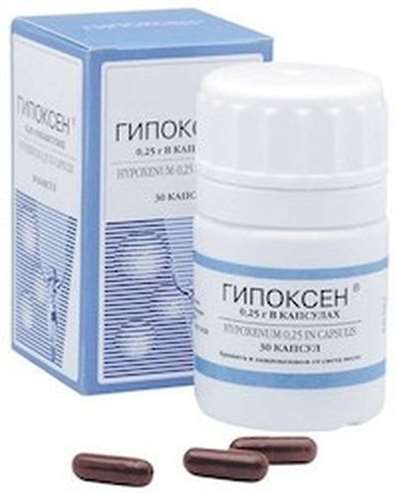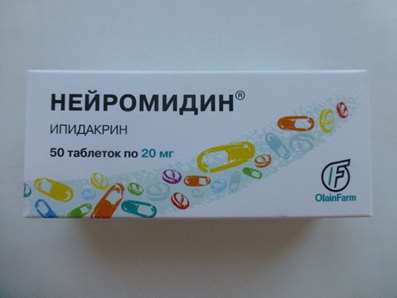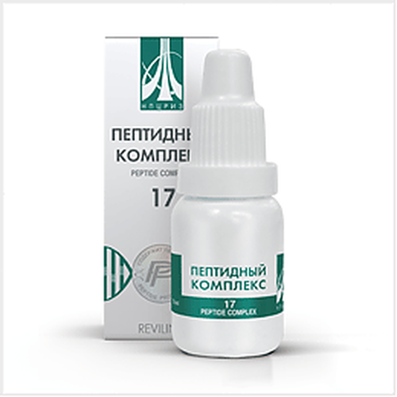Instruction for use: Voltaren Emulgel
I want this, give me price
Active substance Diclofenac
ATX Code M02AA15 Diclofenac
Pharmacological group
Non-steroidal anti-inflammatory drug (NSAID) [NSAIDs - Acetic acid derivatives and related compounds]
Composition
Gel for external use 2% 100 g
active substance:
diclofenac diethylamine 2.32 g
(corresponding to 2 g of diclofenac sodium)
auxiliary substances: carbomers * - 1,1-1,7 g; cetostearomacrogol - 2 g; cocoyl prilocaprate - 2.5 g; diethylamine * - 0.89-1.37 g; isopropanol 17.5 g; liquid paraffin 2.5 g; oleyl alcohol - 0.75 g; eucalyptus flavoring - 0.1 g; propylene glycol 5 g; butylhydroxytoluene - 0.02 g; purified water * - 64.22-65.32 g
* when using different production equipment and different sizes of series (1000 and 2500 kg), the amount of carbomers, diethyleneamine and purified water can be slightly adjusted within the indicated figures
Description of dosage form
Homogeneous creamy gel from white to white with a yellowish hue of color.
pharmachologic effect
Pharmacological action - anti-inflammatory local, analgesic local.
Pharmacodynamics
Active component of diclofenac - NSAIDs, which has pronounced analgesic, anti-inflammatory and antipyretic properties. By indiscriminately inhibiting COX-1 and -2, it disrupts the metabolism of arachidonic acid.
Voltaren® Emulgel® is used to eliminate pain and inflammation in the joints, muscles and ligaments of traumatic or rheumatic origin, contributing to the reduction of pain and swelling associated with the inflammatory process, increasing the mobility of the joints.
Pharmacokinetics
The amount of diclofenac absorbed through the skin is proportional to the area of the treated surface and depends on both the total dose of the drug applied and the degree of hydration of the skin. After application of the Voltaren® Emulgel® preparation on the surface of the skin with an area of 400 cm2, an external gel 2% (2 applications per day), the concentration of the active substance in the plasma corresponds to its concentration when using 1% diclofenac gel (4 applications per day). On the 7th day, the relative bioavailability of the drug (AUC ratio) is 4.5% (for the equivalent dose of the sodium salt of diclofenac). When wearing a moisture-permeable bandage, the absorption did not change.
The concentration of diclofenac in plasma, synovial membrane and synovial fluid was measured when the preparation was applied to the affected joint: Cmax in the plasma was approximately 100 times lower than after oral administration of the same amount of diclofenac. 99.7% of diclofenac is bound by plasma proteins, mainly with albumins (99.4%). Diclofenac is predominantly distributed and retained in tissues prone to inflammation, such as joints, where its concentration is 20 times higher than in plasma.
The metabolism of diclofenac is partly due to glucuronization of the unmodified molecule, but mainly through single and multiple hydroxylation, which leads to the formation of several phenolic metabolites, most of which are converted into glucuronide conjugates. Two phenolic metabolites are biologically active, but to a much lesser extent than diclofenac.
The total systemic plasma clearance of diclofenac is (263 ± 56) ml / min. The final T1 / 2 is 1-2 hours. T1 / 2 metabolites, including two pharmacologically active, are also short-lived and are 1-3 hours. One of the metabolites (3'-hydroxy-4'-methoxydiclofenac) has a longer half-life, however this metabolite is inactive. Most of the diclofenac and its metabolites are excreted in the urine.
Indications
pain in the back with inflammatory and degenerative diseases of the spine (radiculitis, osteoarthrosis, lumbago, sciatica);
pain in the joints (joints of the fingers, knees, etc.) with rheumatoid arthritis, osteoarthritis;
pain in muscles (due to stretching, overstrain, bruises, injuries);
inflammation and swelling of soft tissues and joints due to injuries and rheumatic diseases (tendovaginitis, bursitis, periarticular tissue lesions, wrist syndrome)
Contraindications
hypersensitivity to diclofenac or other components of the drug;
propensity to occurrence of attacks of a bronchial asthma, skin rashes or sharp rhinitis at application of acetylsalicylic acid or other NSAIDs;
violation of the integrity of the skin in the intended site of application;
pregnancy (III trimester);
breast-feeding;
children's age (up to 12 years).
With caution: hepatic porphyria (exacerbation); erosive and ulcerative lesions of the gastrointestinal tract; severe violations of the liver and kidneys; disorders of blood clotting (including hemophilia, prolonged bleeding time, a tendency to bleed); chronic heart failure, bronchial asthma, elderly age, pregnancy (I and II trimester).
pregnancy and lactation
Due to the lack of data on the use of Voltaren® Emulgel® in pregnant women, use during the first and second trimesters of pregnancy is recommended only according to the doctor's prescription, comparing the benefits to the mother and the risk to the fetus. The drug is contraindicated in the third trimester of pregnancy in connection with the possibility of lowering the tone of the uterus and / or premature closure of the arterial duct of the fetus.
Due to the lack of data on the penetration of Voltaren® Emulgel® into breast milk, application is not recommended during breastfeeding. If nevertheless it is necessary to use the drug, then it should not be applied to the mammary glands or to the large surface of the skin and to apply for a long time
Side effects
Unwanted reactions are mainly characterized by moderately expressed and transmitted skin manifestations at the site of application of the gel. In very rare cases, the development of allergic reactions is possible. Classification of incidence of adverse reactions: very often - more than 1/10 of prescriptions (≥10%); often more than 1/100, but less than 1/10 of prescriptions (≥1%, but <10%); infrequently - more than 1/1000, but less than 1/100 of appointments (≥0.1%, but <1%); rarely more than 1/10000, but less than 1/1000 appointments (≥0.01%, but <0.1%); very rarely - less than 1/10000 prescriptions (<0.01%).
Infectious and parasitic diseases: very rarely - pustular eruptions.
On the part of the immune system: very rarely - generalized skin rash, allergic reactions (urticaria, hypersensitivity: angioedema).
On the part of the respiratory system and the organs of the chest and mediastinum: very rarely - attacks of suffocation, bronchospastic reactions.
From the skin: often - erythema, dermatitis, incl. contact dermatitis (symptoms: eczema, itching, swelling of the treated area of the skin, rash, papules, vesicles, peeling); rarely: bullous dermatitis; very rarely photosensitization reactions.
Interaction
The drug can enhance the effect of drugs that cause photosensitivity. Clinically significant interaction with other drugs is not described.
Dosing and Administration
Outwardly.
Adults and children over 12 years of age, the drug is applied to the skin 2 times a day (every 12 hours, preferably in the morning and in the evening), lightly rubbing into the skin.
The required amount of the drug depends on the size of the painful area. A single dose of the drug - 2-4 g (which is comparable in volume to the size of cherry or walnut, respectively) is sufficient for processing the area of 400-800 cm2. After applying the product, the hands should be washed.
The duration of treatment depends on the indications and the effect observed. The gel should not be used for more than 14 days with post-traumatic inflammations and rheumatic diseases of soft tissues without a doctor's recommendation. If after 7 days of application the therapeutic effect is not observed or the condition worsens, you should consult a doctor.
To remove the protective membrane, use a screw cap as a key (a recess with protrusions on the outside of the cover). It is necessary to combine the recess on the outside of the lid with the shaped protective membrane of the tube and turn. The membrane must separate from the tube.
Overdose
Symptoms: Due to low systemic absorption during gel application, an overdose is unlikely. With accidental ingestion, it is possible to develop systemic adverse reactions.
Treatment: gastric lavage, induction of vomiting, the appointment of activated charcoal, symptomatic therapy. Dialysis and forced diuresis are ineffective due to the high degree of binding of diclofenac to plasma proteins (about 99%).
special instructions
Voltaren® Emulgel® should only be applied to intact skin, avoiding exposure to open wounds. Do not allow the drug to enter the mouth, eyes and mucous membranes. After applying the drug, a bandage bandage is allowed, but air-tight occlusive dressings should not be applied. In case of development after application of a preparation of a skin rash, its use should be stopped.
The drug contains propylene glycol, which in some people can cause mild local irritation. It also contains butylhydroxytoluene, which can cause local skin reactions (eg contact dermatitis) or irritation of the eyes and mucous membranes.
Influence on the ability to drive and work with machinery. Does not affect.
Form of issue
Gel for external use, 2%. By 50 or 100 grams in a laminated tube (LDPE, aluminum, HDPE) with a shoulder and a cast-piece shaped protective membrane of HDPE and a polypropylene screw cap. The lid on the outside is provided with a key (a recess with projections) for opening the protective membrane of the tube. The tube is placed in a cardboard box.
Conditions of leave from pharmacies
Without recipe.
Storage conditions
At a temperature not exceeding 30 ° C.
Keep out of the reach of children.
Shelf Life
3 years.
Do not use after the expiry date printed on the package.

 Cart
Cart





